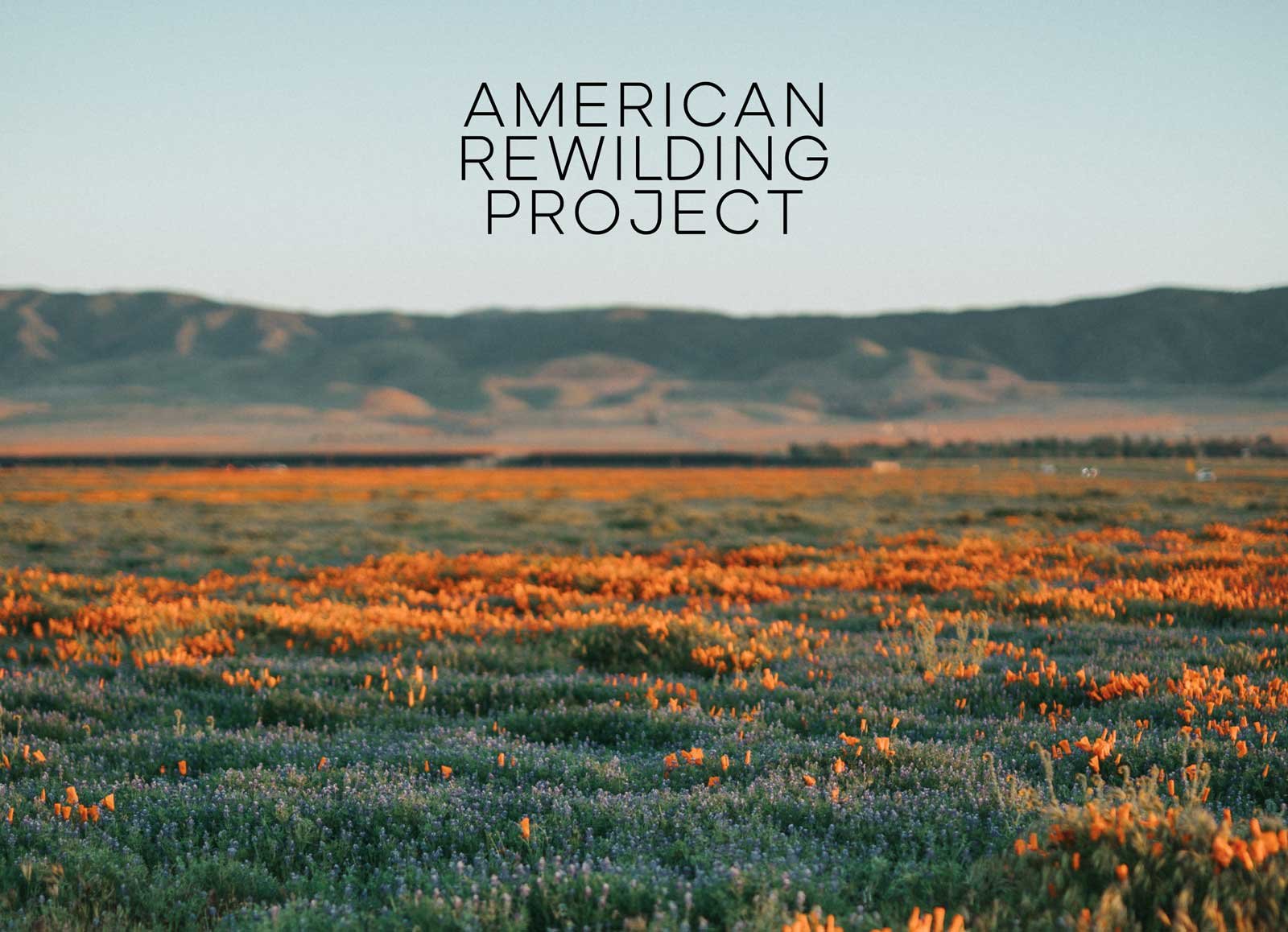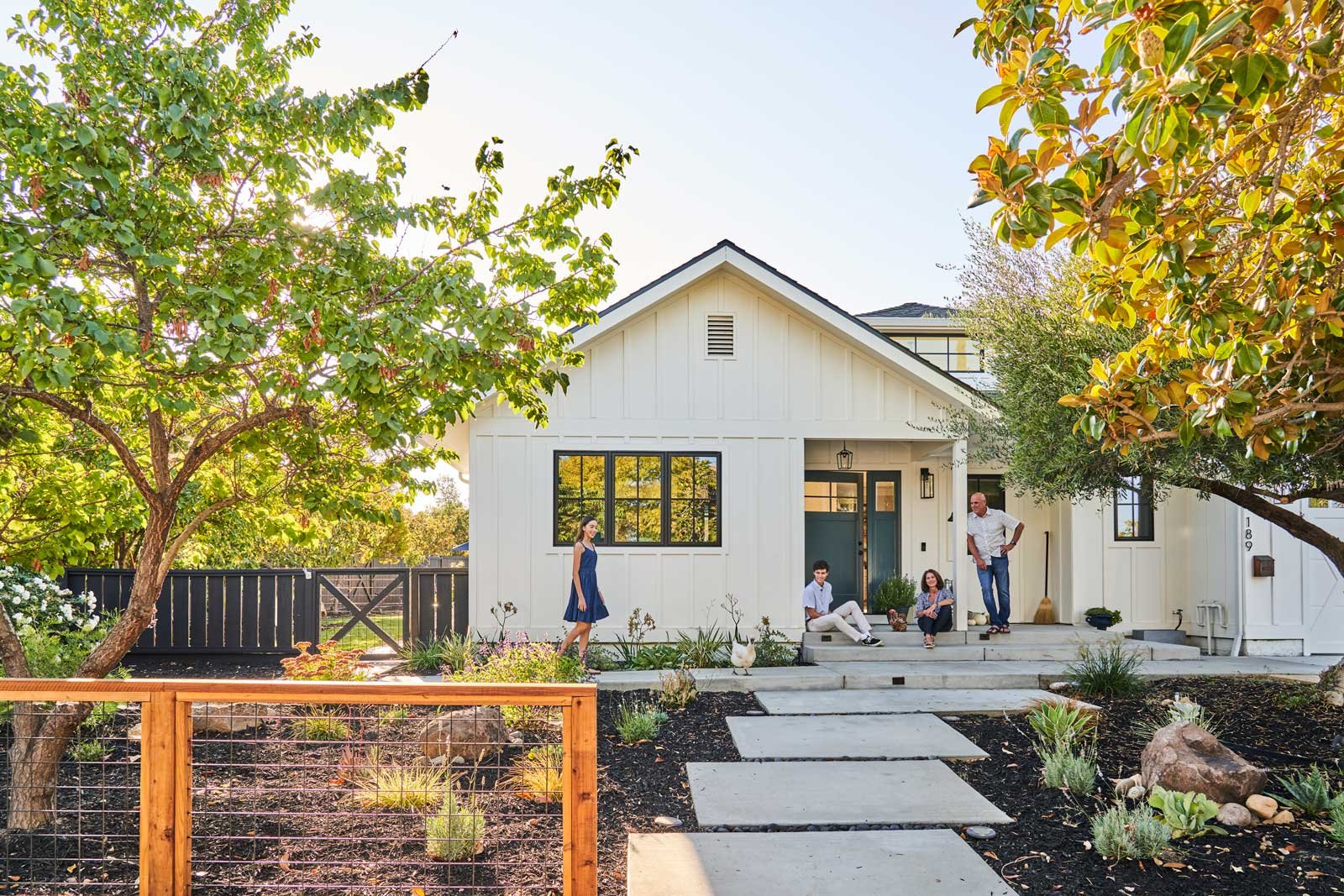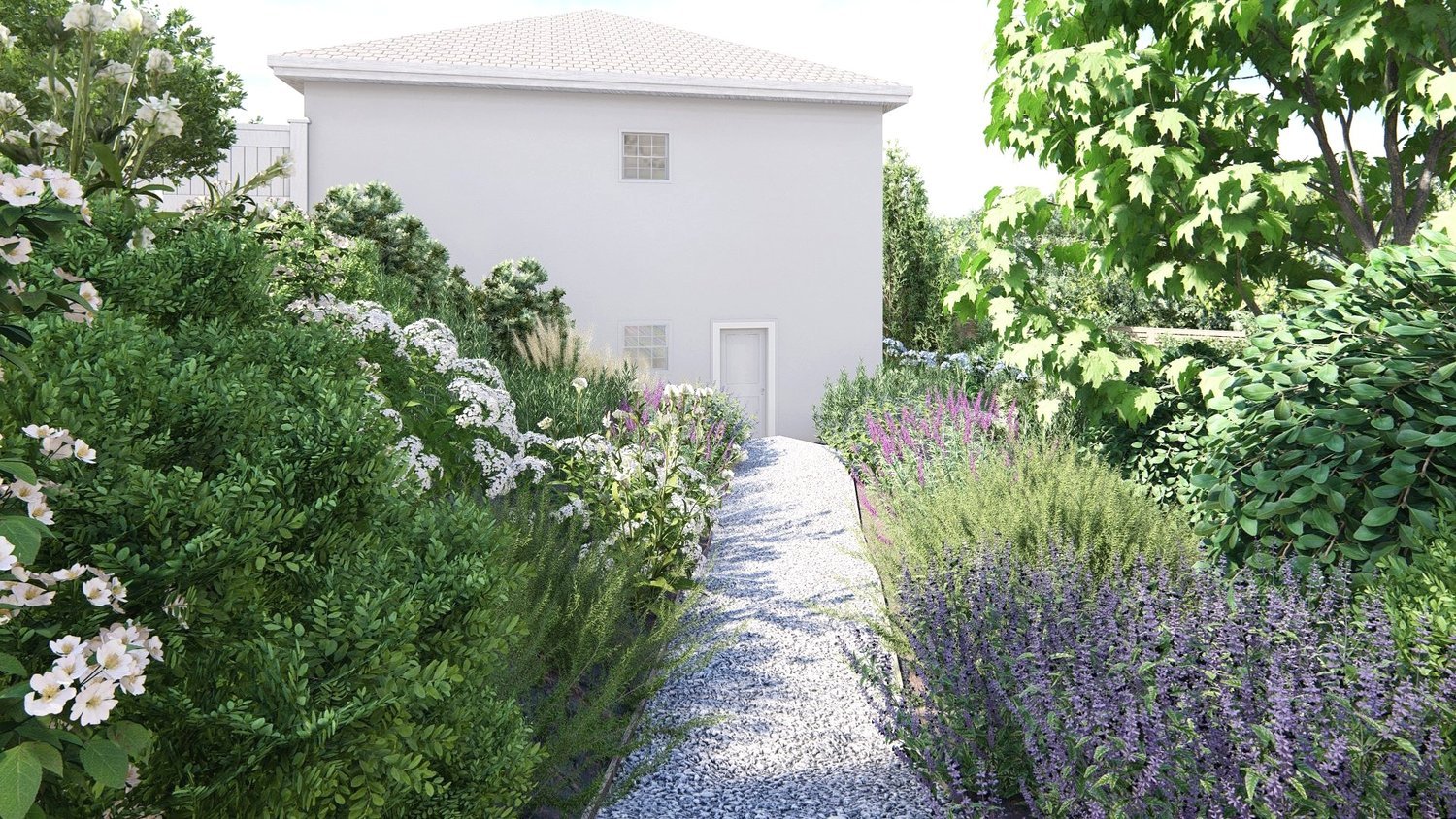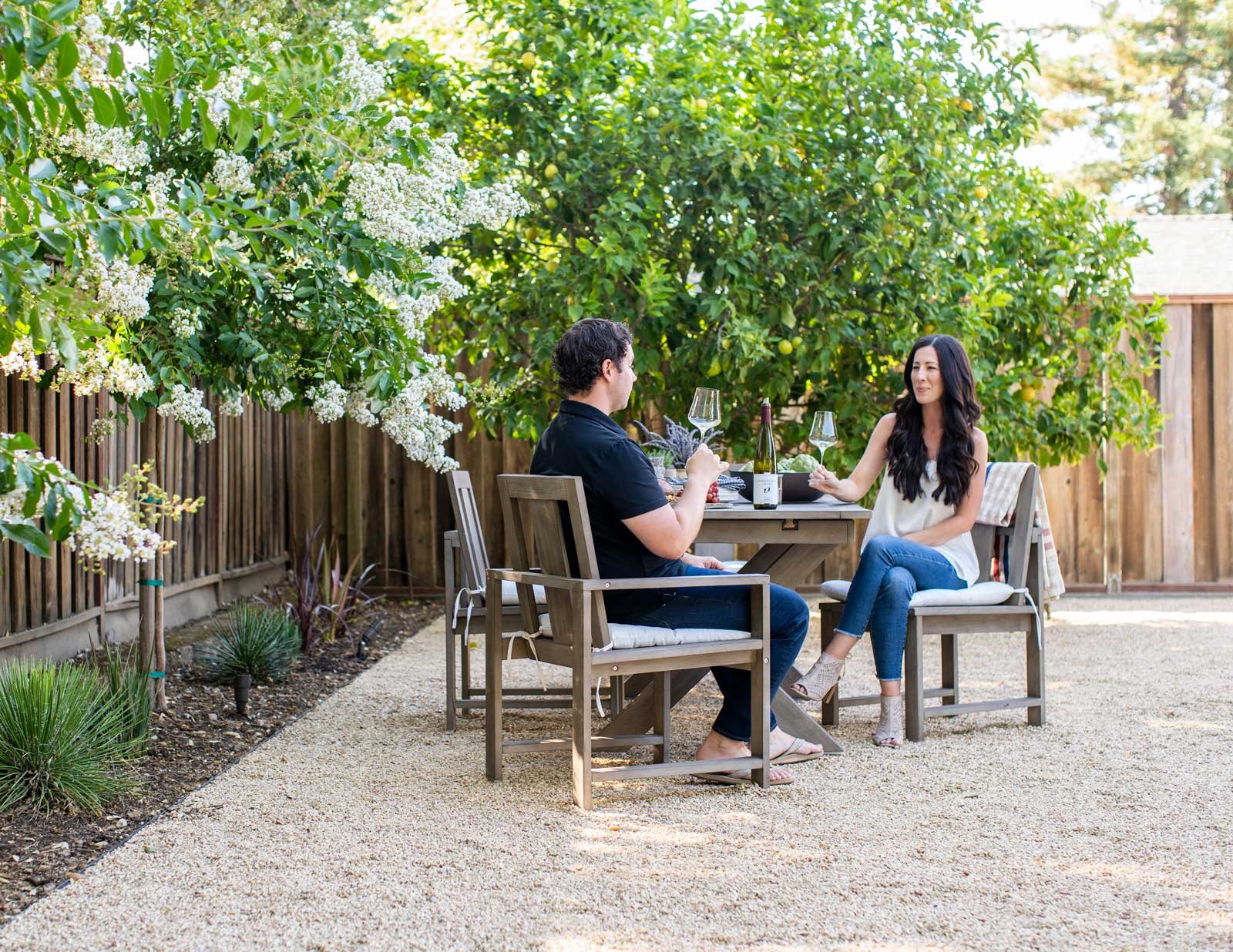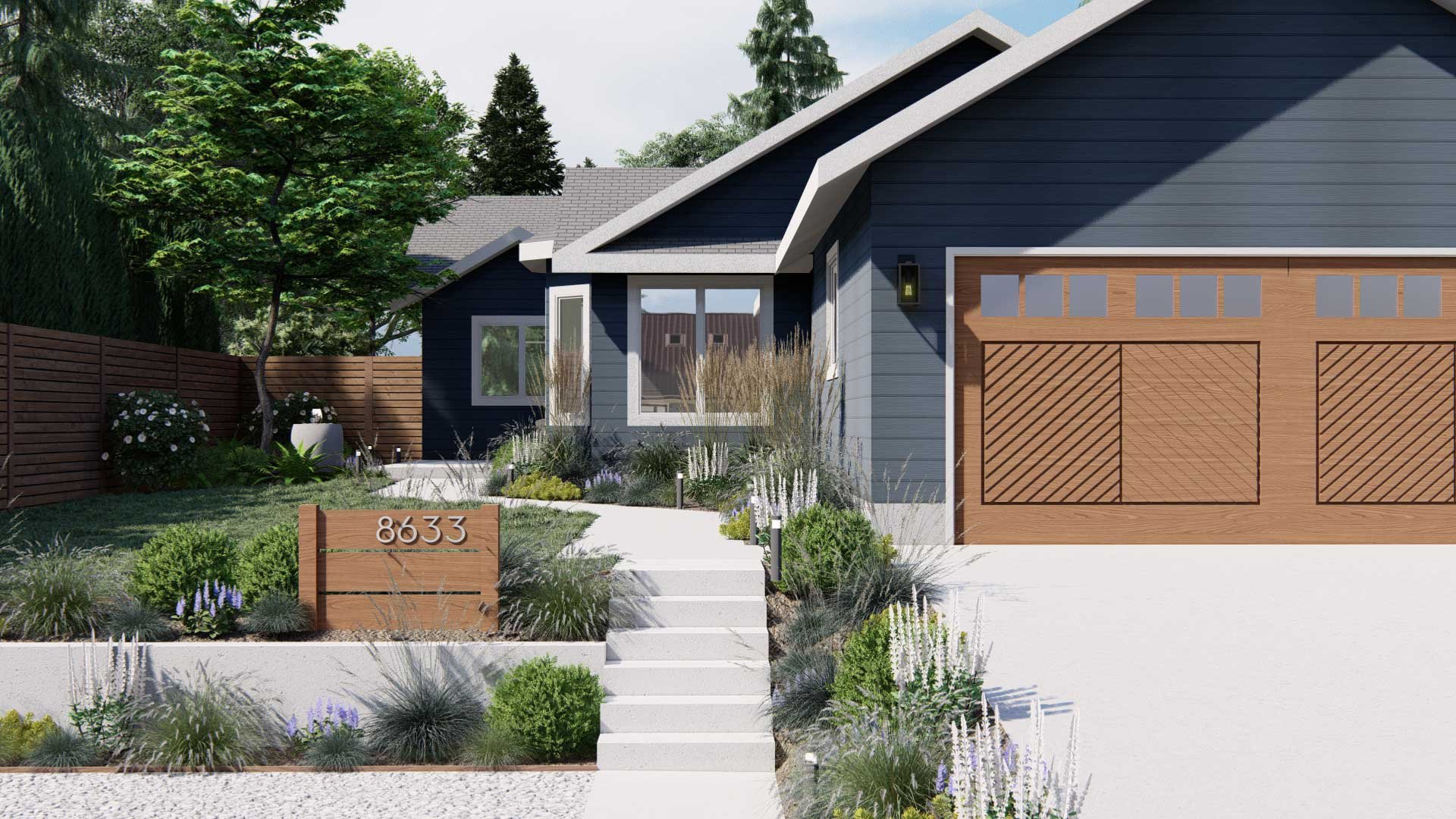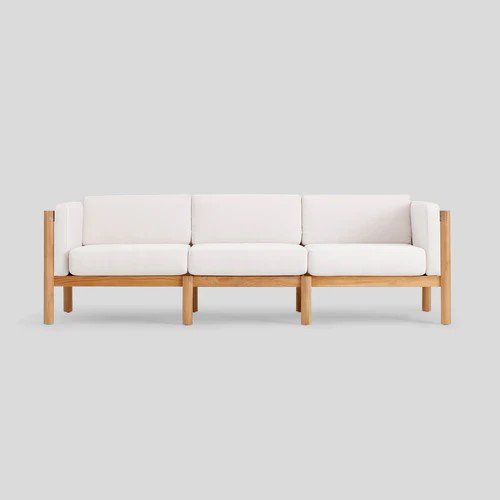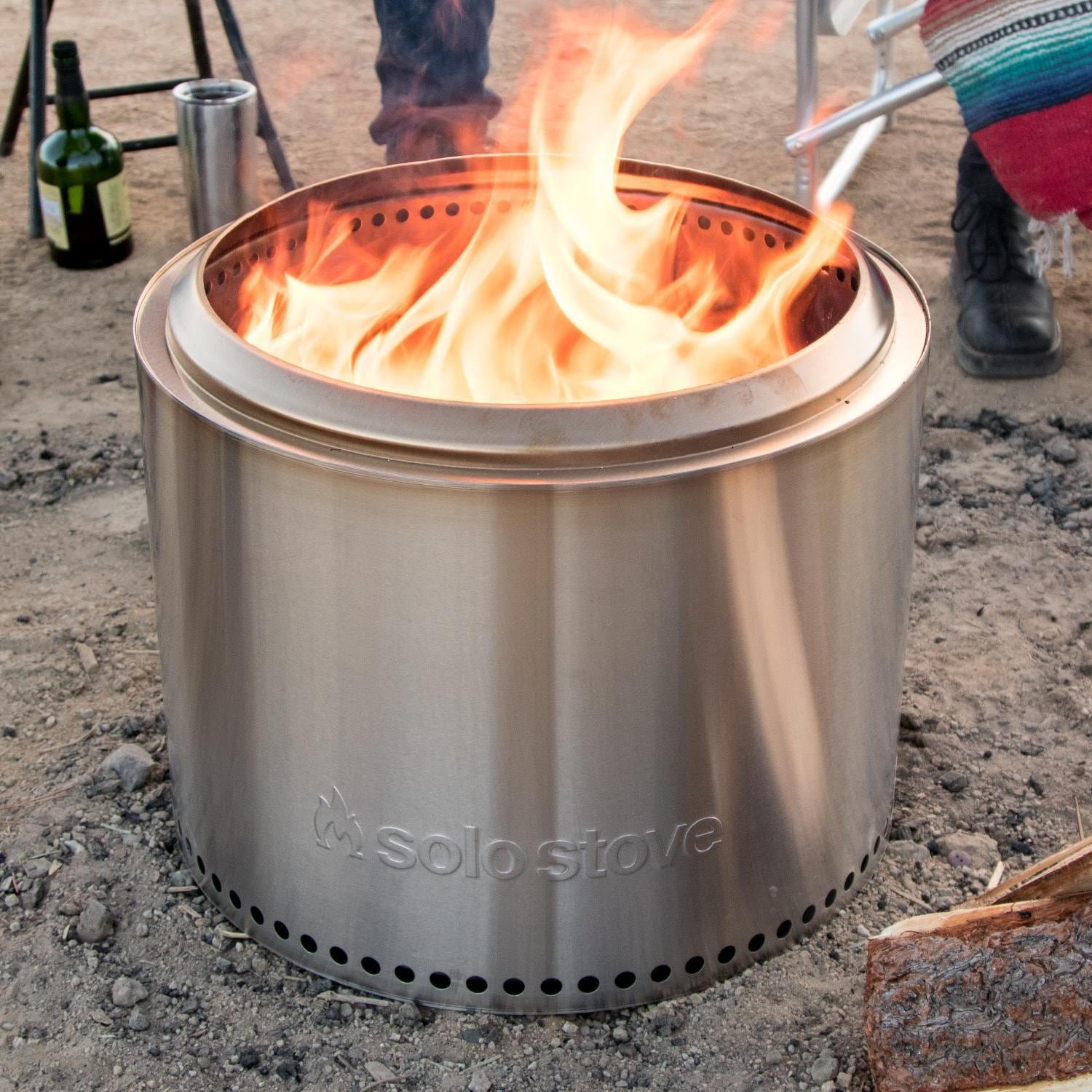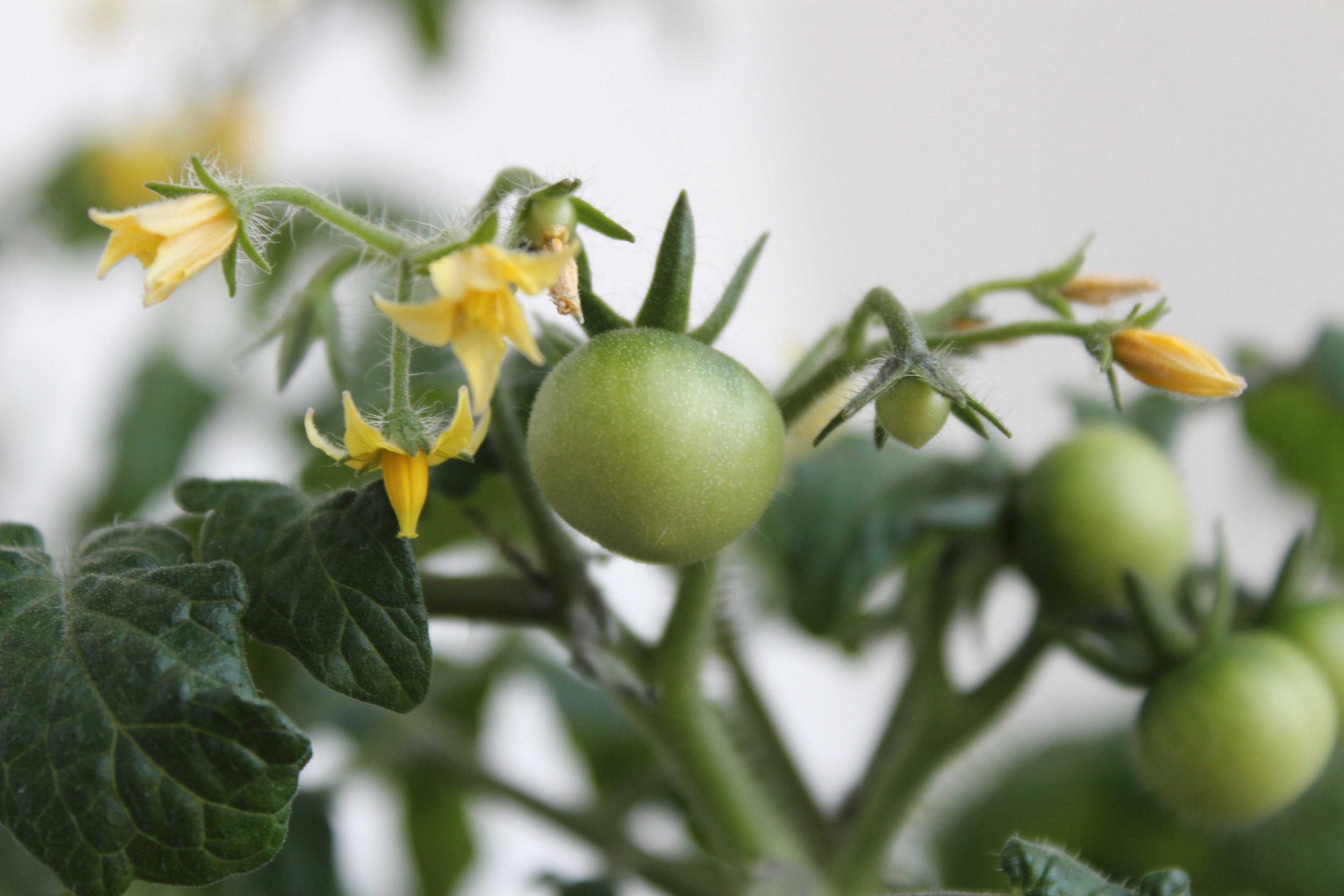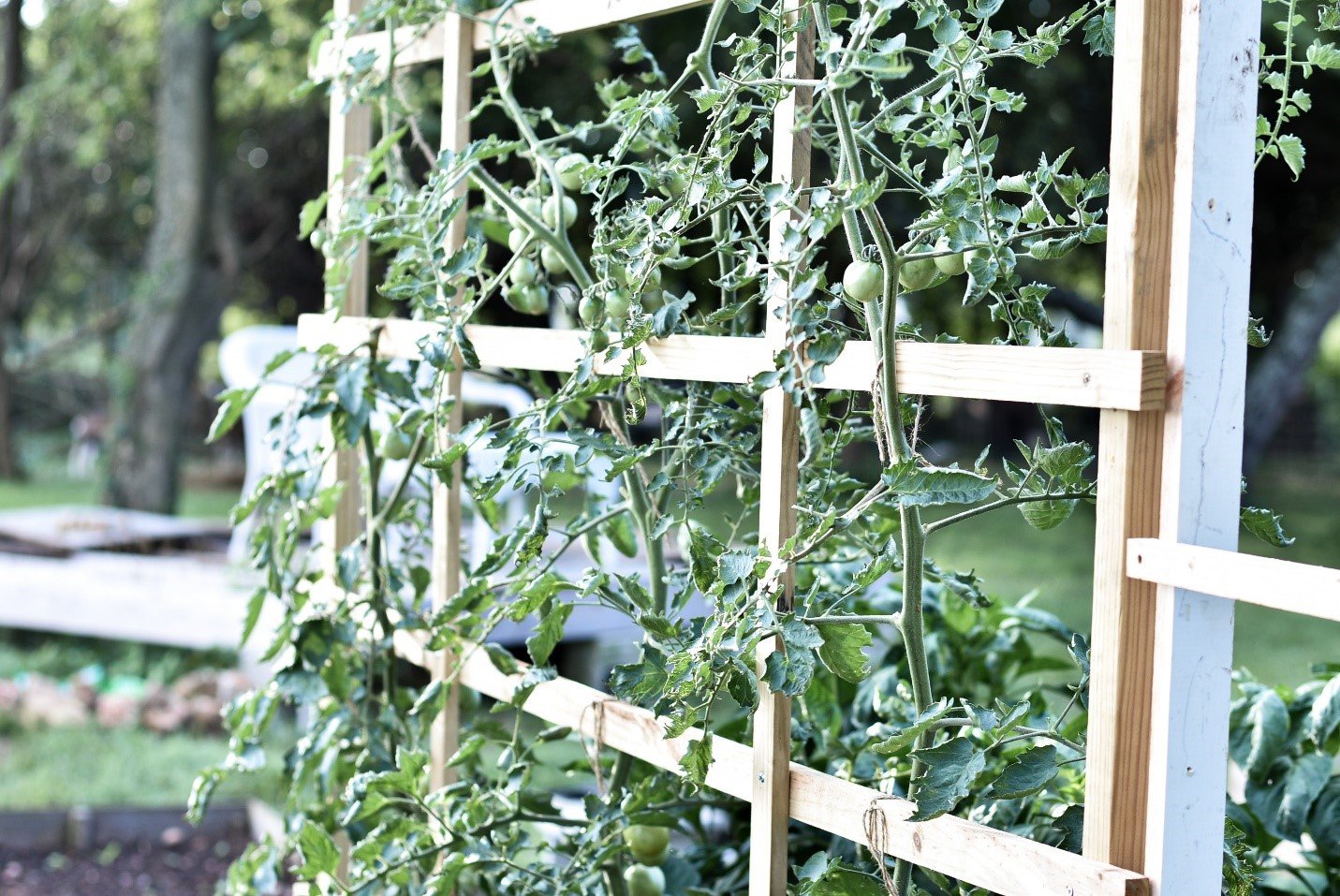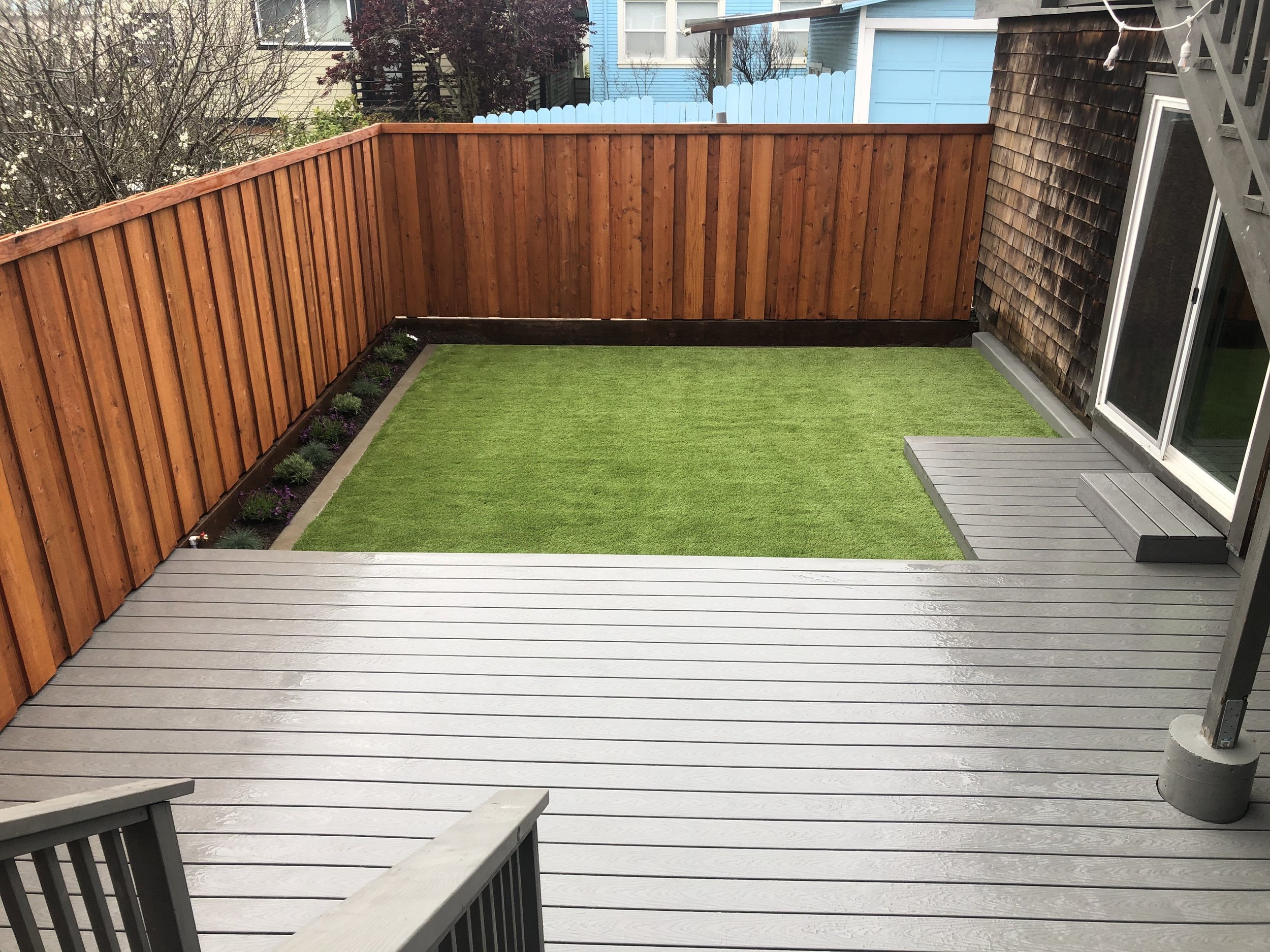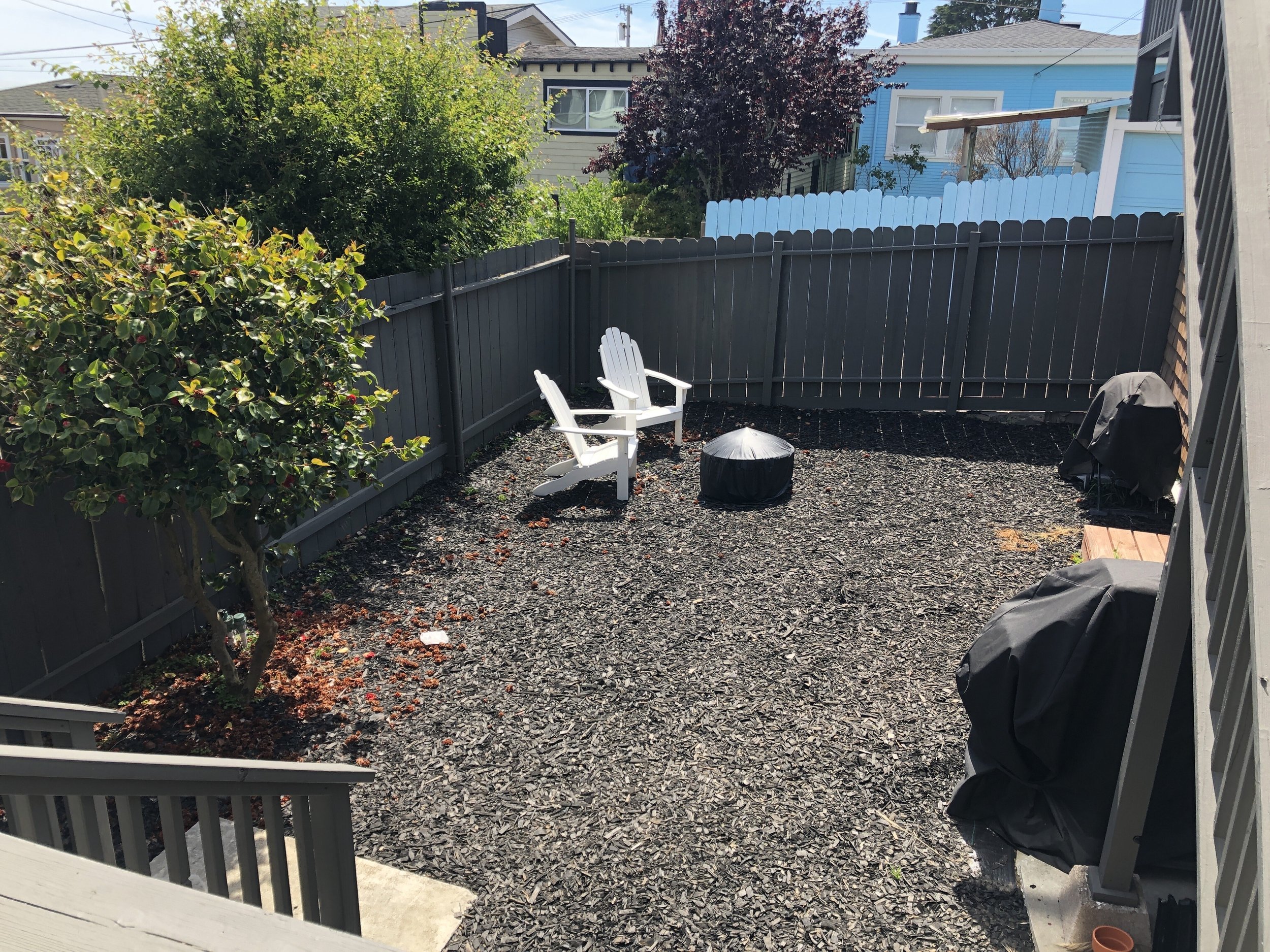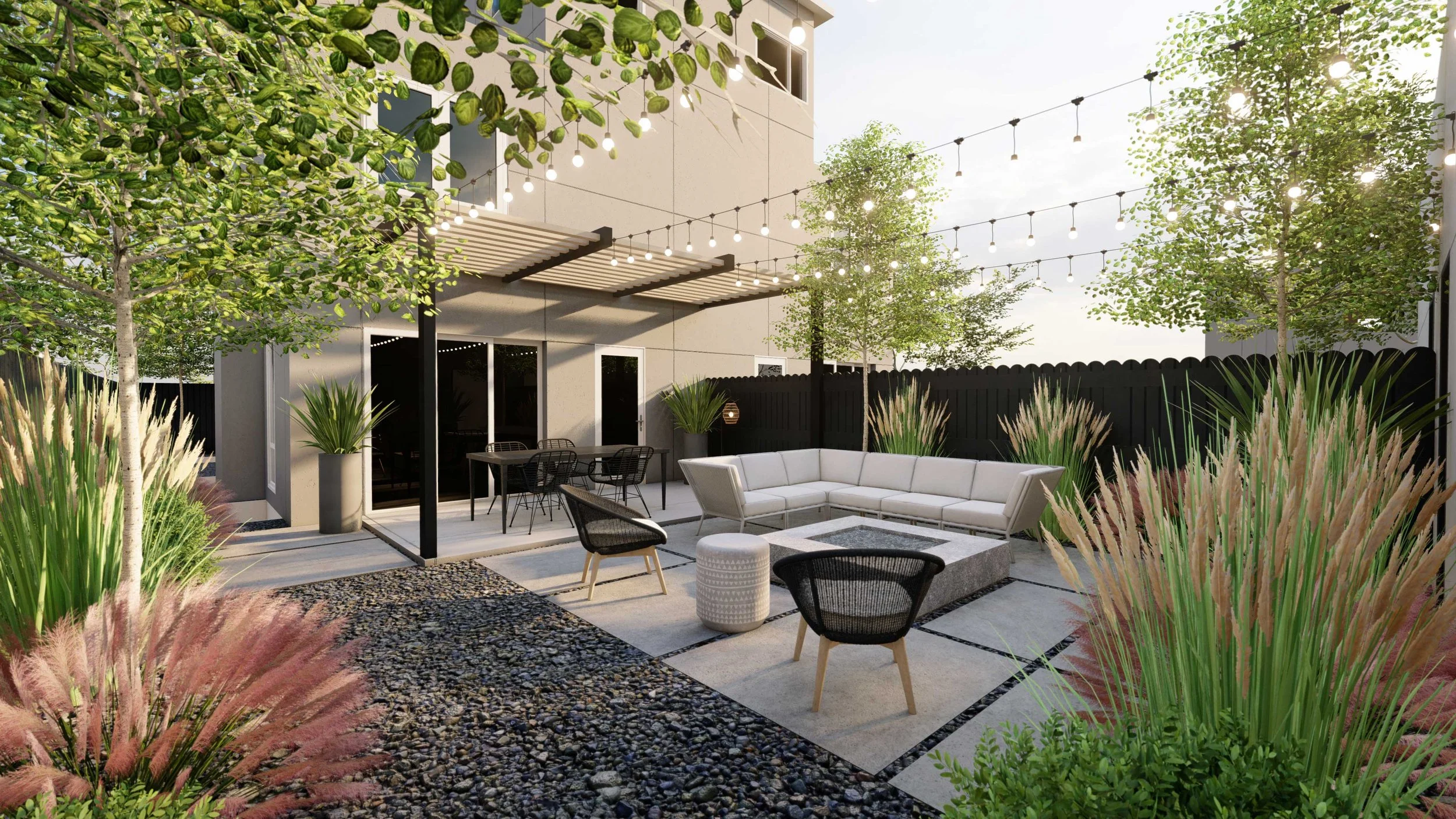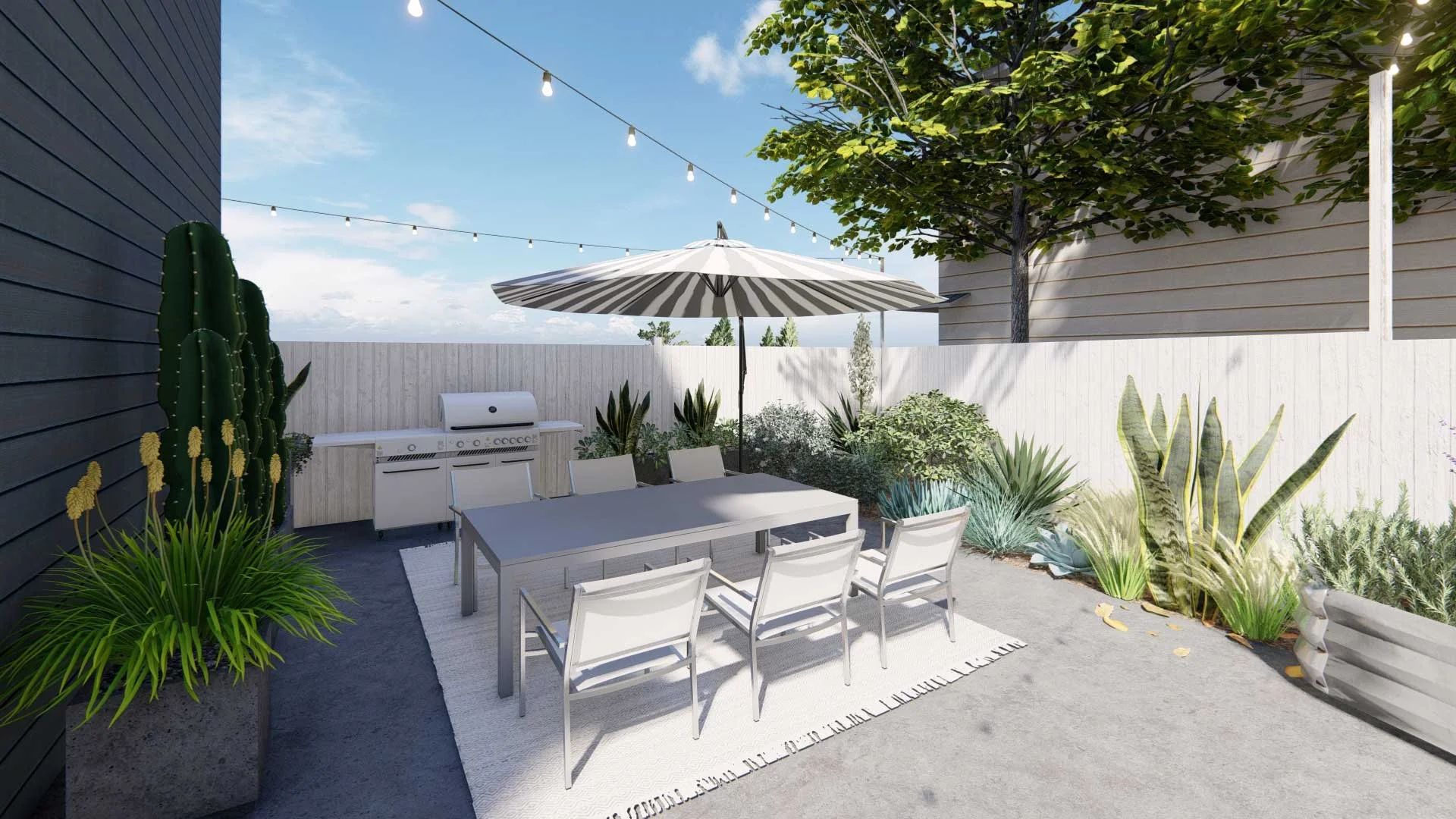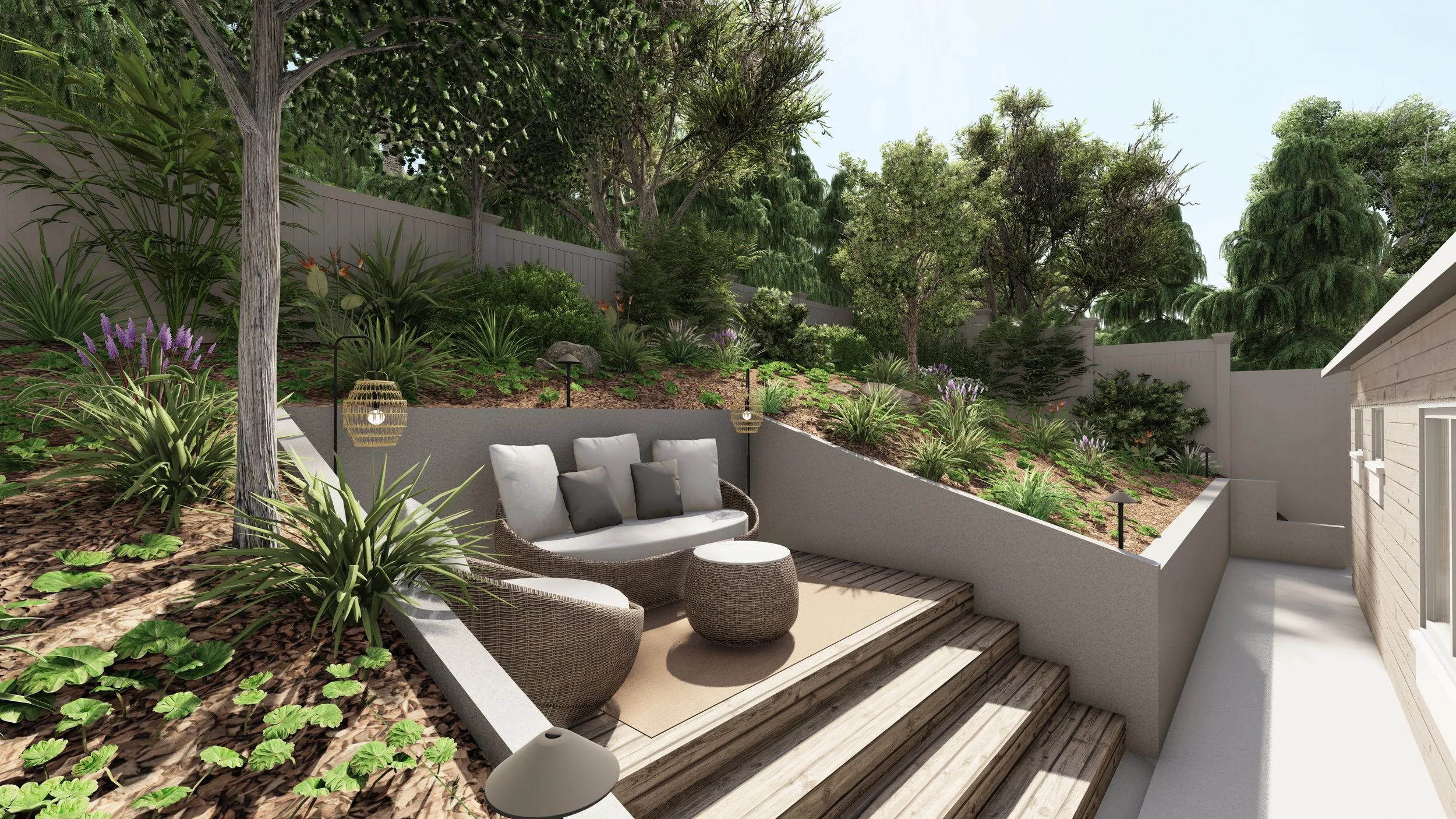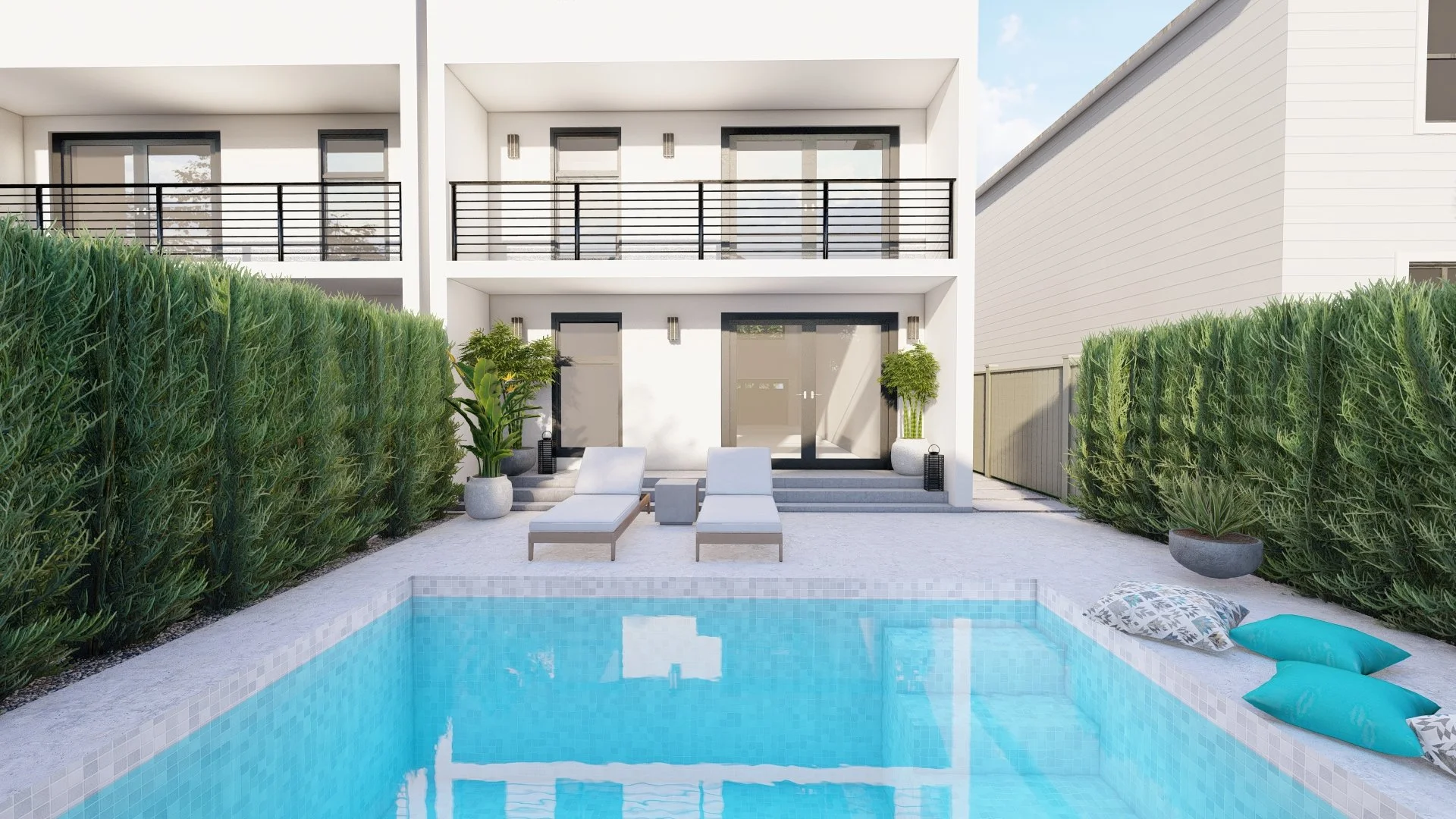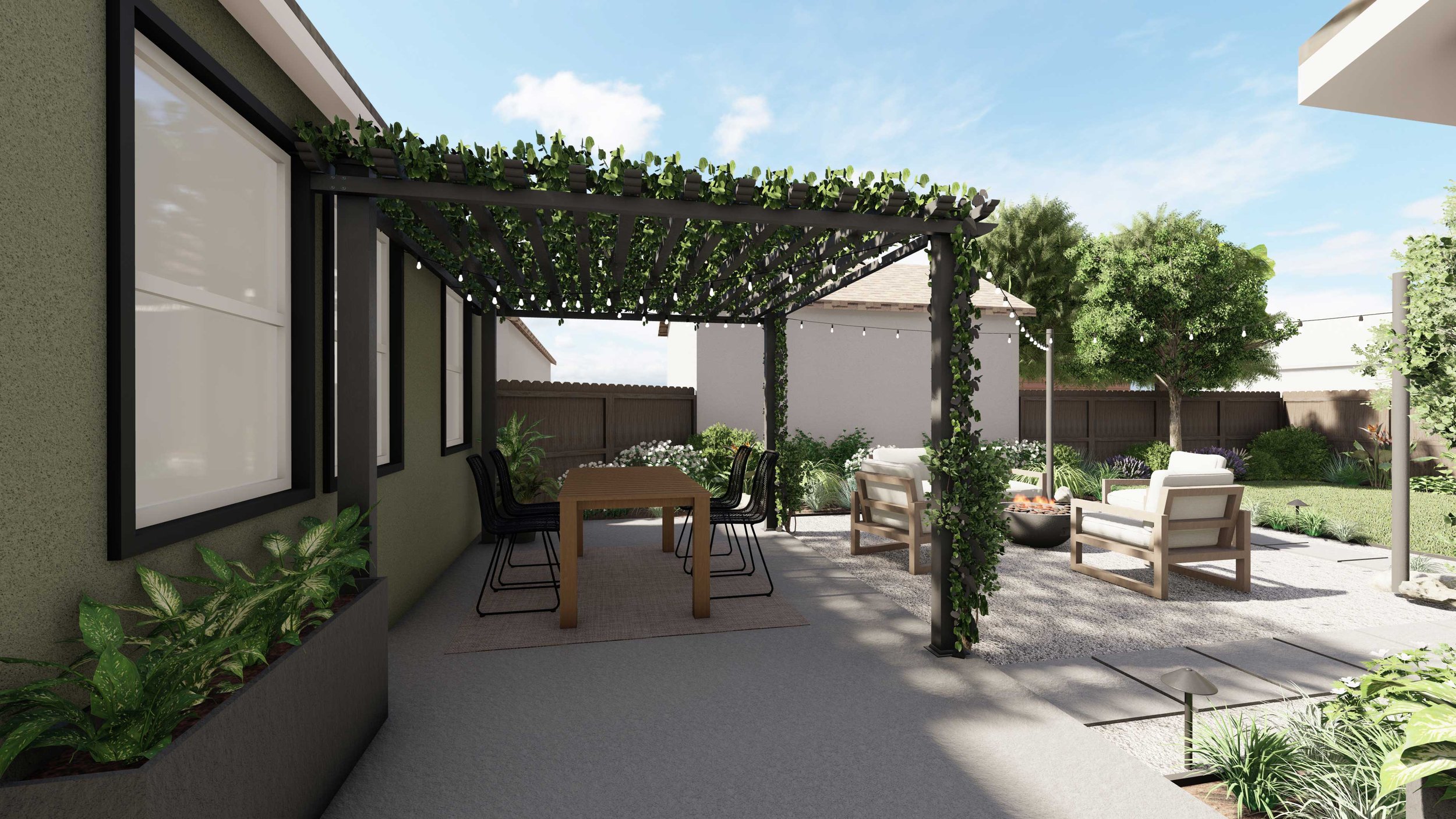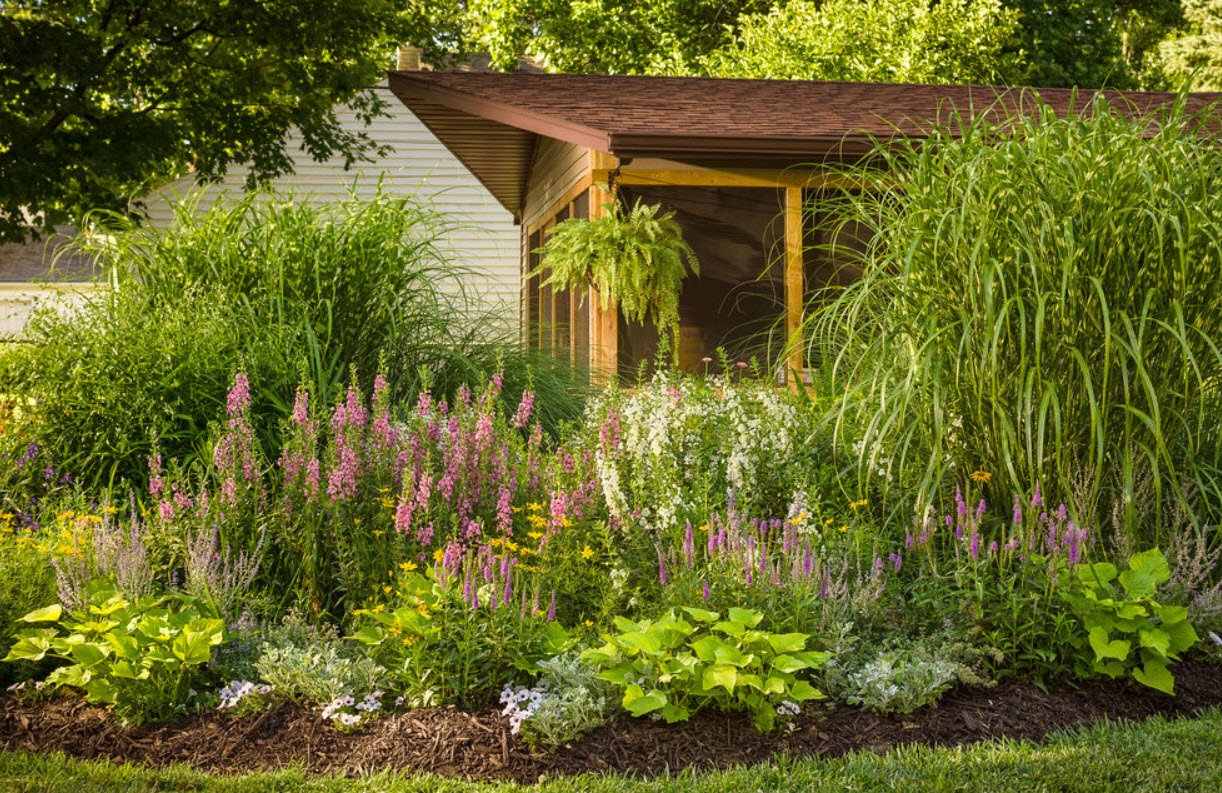LANDSCAPE DESIGN FOR ALL
The American yard has changed, and for good reason. Born of this moment— pandemic, drought, climate change, migration, a booming housing market— the yard has become something altogether new. An outdoor space with impact beyond the confines of private property, creating good neighborhoods and thriving habitats.
Here, we tell the story of the changing American yard using data from the over 100,000 homeowners who have shared their priorities and preferences as they reimagine their yard using Yardzen.
TREND 01
Creating Real Change With The Yard
100,000+ pollinator plants planted
50,000+ trees planted
1,125,000+ gallons of water saved
25,000+ edible plants planted
Yardzen clients understand that their yard can make a tangible, positive impact on their neighborhood and the planet. Outdoor spaces have real potential to create change through biodiversity, habitat creation, carbon sequestration, neighborhood beautification, and community creation.
And, as the largest outdoor design & build company in the world, Yardzen has the power to make a difference in the world through the American Rewilding Project, our mission to create proactively sustainable yards that help to halt the devastation of a warming planet.
Over 95% of Yardzen yards follow the core principles of our American Rewilding Project, including:
Habitat creation through the use of keystone species
Pollinator-supporting yards using native and climate-adapted plants
Water smart landscaping: Save water, avoid flooding, and stop water pollution
Cut back on air pollution, urban heat islands, and home energy use by planting trees
Use FSC-certified furniture and materials made from recycled goods
Make the community safer, healthier, and more attractive with outdoor spaces that welcome the neighborhood
Our yards are not incidental, they’re where the good work gets done. Learn more about the American Rewilding Project.
TREND 02
Re-Thinking the Lawn
Requests for lawn replacement have increased 66% over the last year
Lawns are deeply rooted in our national identity, an enduring symbol of the American residential landscape. Times change, though. Client requests to reduce or replace lawns have steadily increased over the past year. Increasingly, landscape design is turning to different opportunities, reducing or replacing lawns in favor of other landscape features.
THE TROUBLE WITH LAWNS
There are good reasons to cut back on lawns. For starters, lawns are the most maintenance-intensive part of a yard’s landscape, requiring regular mowing, fertilization, and a whole lot of irrigation to remain in good shape. With these high maintenance demands come fuel consumption and exhaust emissions from mowers, water pollution from fertilizer and pesticides, and major water use in an era of massive drought.
In short, lawn reduction can have a massive positive impact on the environment.
POST-LAWN DESIGN
Removing lawn is an opportunity. Rather than simply substituting a different species within the existing lawn footprint, we suggest a broader perspective: how can we create the most overall design benefit within the space a lawn occupies?
There is no cookie-cutter response to this design inquiry. Rather, an individual client’s goals and priorities will guide the design response to lawn replacement. Often, the response will involve a mix of features: seating areas, play areas, planting beds, veggie gardens. The options are limitless, as is the potential to improve overall design quality.
TREND 03
The Return of the English "Cottage" Garden
100% increase in requests for a “cottage” style garden over the last year
The traditional English “cottage” garden style is on the rise, with Yardzen client requests for the style doubling over the past year.
Cottage gardens are characterized by an abundance of different species, arranged in a highly intermixed, colorful, billowing display of plant life. You’ll see fruit trees and herbs, big green shrubs, dense mats of groundcover, wispy perennials, and above all, lots and lots of flowers.
Cottage gardens have a come one, come all attitude, and welcome change. It’s common practice to continually tinker with cottage gardens, adding and removing plants over time. The result is an ever-evolving garden that inevitably bears the personal signature of its caretakers.
Because of the wide species variety in a cottage garden, it’s easy to adapt them to regional landscape identities. While the archetypal cottage garden features flowers like foxgloves, hollyhocks, and Delphiniums, there are no required plants. Focus instead on replicating the colors, textures, and fullness of a cottage garden using a palette of native and climate-adapted plants. Sage, yarrow, fleabane, buckwheat, California lilac, Kniphofia, lavender, and Russian sage are just a handful of native and climate-adapted species that can bring a rainbow of color to cottage gardens throughout the dry, western U.S.
TREND 04
Modern Meadow
Meadow yards are one of Yardzen's most requested design styles
Ornamental grasses and concrete are the dynamic duo of modern landscape design. On the one hand we have fine texture, soft feel, warm coloration, and gentle movement. On the other, we have heft, hardness, cool gray hues, and stillness. The contrast could not be stronger, and yet, it works wonderfully.
Planting in the modern meadow style is dominated by monolithic masses of ornamental grasses. A very short list of grass species - two to four per project often does it - is selected to establish a few distinct height layers. More often than not, you’ll catch a species with that beloved silvery-blue color, like Elymus ‘Canyon Prince’, or Festuca ‘Elijah Blue’, or Dianella ‘Cassa Blue’.
Layers of ornamental grasses can be arranged formally, with rigid rows or block plantings, or naturalistically, with amorphous masses spreading in all directions, wrapping around each other like amoebas at a cocktail party.
Hardscape design contributes to the sense of expansiveness by eliminating boundaries whenever possible. Broad open edges are the default, creating a sense of interconnection between adjacent spaces, and expanding the perceived sense of space as you move through the landscape.
Crucially, hardscape in the modern meadow style also acts as a frame for planting. Concrete slabs, oversized pavers, boardform or corten steel walls, Mexican pebbles, hardwood decking - when wrapped around planting areas, these clean, overtly modern features recast often unruly species in a flattering, intentional light. With a crisp hardscape frame, the planting looks shaggy by intention, something to be admired and displayed rather than disposed of with a weed wacker.
This careful balance between messiness and refinement is the core ethos of the modern meadow style, and has made it one of the most popular landscape styles for the past several years. By far, it is the most requested landscape style among Yardzen clients.
TREND 05
The New Front Yard
150% increase in requests for “functional front yards”
Attitudes are shifting about what we can do with our front yards.
This process was underway before Covid hit. Once lockdown and quarantine entered the picture, the pace of change only hastened. Restricted from our usual external spaces for play, dining, exercise, and socializing, new pressure was applied to our yards to step up and fill the void.
Our clients illustrate the phenomenon clearly: requests for functional front yard design features are up 150%. Whereas the traditional front yard was primarily an aesthetic resource, clients are now requesting seating areas, fire pits, dining zones, play areas, fenceless porches, pergolas, and vegetable beds. Quite often, they hope to fit a few of these features out front. Each of these features has a social component - even veggie beds offer a conversational ice breaker and physical location to kickstart neighborly interaction.
To simply be in your front yard for longer than a walk to the car is a social act, so long as your neighbors can see you, and your yard expresses permission for people to approach. A neighborhood filled with welcoming front yards is a safer, friendlier, and ultimately more appealing place to be than a collection of insular enclaves. In car-centric communities with little foot or bicycle traffic, the need for landscapes that encourage interaction is all the greater.
TREND 06
Sensory Experience
73% of Yardzen clients request at least one sensory element in their yard— smell, taste, sound, touch
Among the many things we rely on our yards for, a sense of peace is way up there. When we step outside, we want to be transported to a new, serene place. By designing landscapes to engage a broad range of senses, we can stack the odds in favor of serenity. The more senses we engage, the more rapid and thorough our transportation can be.
Setting aside sight - every landscape design aims to visually please - scent is an obvious starting point in a sensory landscape design. Jasmine vines, pocket plantings of rosemary, sage, and lavender, corsican mint groundcover laced between pavers, and potted displays of any number of classically fragrant flowers, from gardenias to roses to phlox, are all tried-and-true approaches to lending a fragrant dimension to landscape designs.
Sound offers another area of sensory opportunity. The shuffle of leaves in the wind becomes a gauzy blanket of sound as tree cover increases. Plant more trees, and you’ll get more of that soothing sound (and a host of other benefits!). Opt for fine-textured species, like elms, palms, or even bamboo. Ornamental grasses, sedges, and rushes all audibly swish in the wind, and are a great place to start.
Planting designs can introduce additional sounds by planting for wildlife. Including habitat-rich native plants in a design will draw birds and butterflies to your yard, where their calls and flapping wings can add to the audible array.
Touch is the final sense to engage, again through careful planting design. Given the goal of serenity, softness is the target. Let silvermound, and lamb’s ears overlap path edges, while wooly thyme can wind its way between stone pavers. Each of these species are widely available and exceptionally soft to the touch.
This need for a sensory retreat is greatest for households that are isolated from quality experiences with nature, or otherwise immersed in a harried environment. More often than not, these are homes in urban neighborhoods, with limited outdoor space. Such compact spaces may not accommodate new large trees, but virtually any outdoor space can manage to fit a container plant or two. Luckily, this is all you need to benefit from plants’ sensory offerings.
TREND 07
Blue Houses are the New Black
200% increase in blue exterior paint in 2022
40% of Yardzen package purchases include exterior design. The New American Yard thinks of your outdoor space holistically, including the exterior of your home, which sets the backdrop for any landscape. This applies to both the front yard and back.
Yardzen reimagined outdoor design and living with our new exterior designing offering in 2021 alongside paint partner Benjamin Moore, expanding the scope of landscape design to include a home’s paint, windows, doors, lighting, house numbers, and more. Our high percentage of exterior design package purchases signal homeowners’ desire for a considered, cohesive outdoor space, including landscaping and exterior design.
Yardzen’s two most popular exterior paint colors are white (Benjamin Moore Chantilly Lace) and black (Benjamin Moore Graphite), but there is a new cool color on the scene: blue! We’ve seen a sharp increase in requests for dark, dusty blue houses – Benjamin Moore’s Newburyport Blue.
Newburyport Blue signals a shift away from the stark white and black of the modern farmhouse to the richness of classic colors, reflective of the interior trend toward elevated English country (one of our top landscaping trends this year) with rough-hewn textures and muddy tones.
TREND 08
In Praise of FSC-Certified Teak
Strong, water- and rot-resistant, and beautiful to boot. Teak has a lot going for it. Its durability makes it a super sustainable material - buy a piece of teak furniture and you’ll be set for decades.
Being a tropical hardwood, however, teak’s sourcing can be problematic. Illegal logging of tropical hardwoods is a key driver of widespread deforestation, in turn leading to plummeting biodiversity, increased atmospheric carbon, and a host of other environmental ailments.
Fortunately, we can rely on the Forest Stewardship Council, an organization that carefully monitors forestry practices to make sure that wood is produced in an environmentally and socially sustainable manner. You can buy FSC-certified products with confidence in their environmental pedigree.
To that end, there are some fabulous FSC-certified teak products out there that make for exquisite additions to landscape designs.
The sofa and dining set by Neighbor are two such examples, each boasting simple, clean designs that are nonetheless striking. In addition to durable teak frames, they use Sunbrella fabric, pretty much the best stuff you can get when it comes to outdoor furniture.
Skagerak also produces a beautiful array of FSC-certified teak pieces to furnish outdoor spaces. Among many strong offerings, the Lilium lounge chair and Between Lines deck chair are standouts for balancing Danish modern looks with approachable comfort.
TREND 09
The Backyard Campout
70% of Yardzen clients request a fire pit in their design
During the pandemic, we turned to our yards for outdoor escape – an open space for fresh air, getting dirty, s’mores, and seeing the stars at night. To replicate the coziness, closeness, and freedom of the campout, our clients turned to fire pits and outdoor shelters, including forts, yurts, and tents, to bring the camping experience home.
OUR FAVORITE PRODUCTS
DESIGNING THE NEW AMERICAN YARD FOR CLIENTS ACROSS ALL 50 STATES
Yardzen's award-winning online exterior and landscape design service is tailored to homeowners with both large and small yards in all fifty states in the U.S. Our design process begins with understanding your outdoor space, style, garden ideas, and a discussion of your budget and vision to minimize surprises when it comes time to build.
Our top-notch designers then develop a personalized vision for your yard, shared through 3D renderings, 2D plan drawings, and plant and material lists. Your design will capture the look, feel, and function you are hoping for, all while keeping costs within range.
Once your design is complete, we'll help you connect with a local contractor from our Pro Network of vetted professional contractors to install your new design.
Ready to bring your design ideas to life? Create your design profile or explore our professional exterior, side yard, front yard, and back yard landscaping design packages today!



